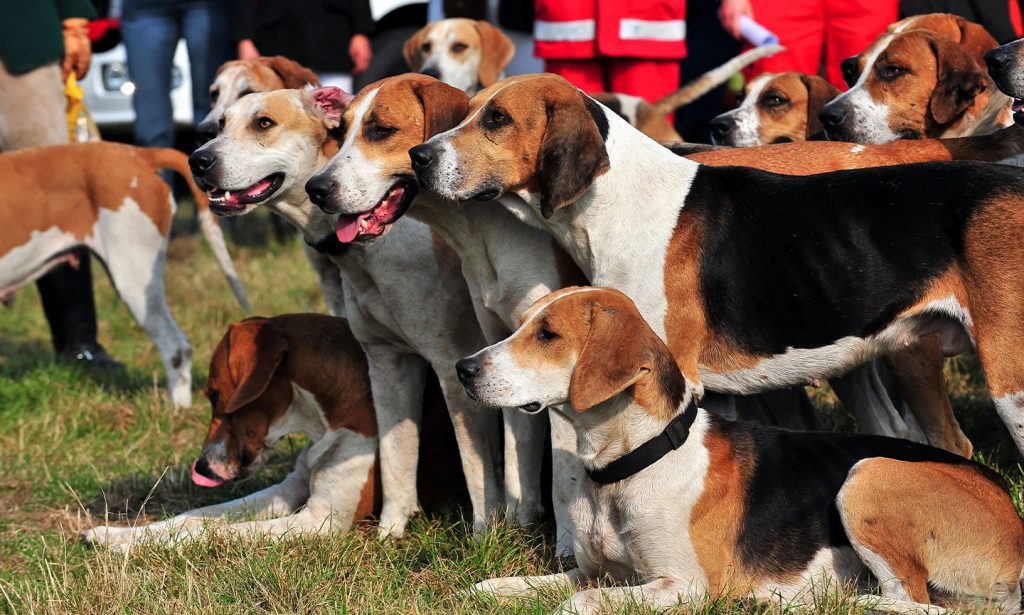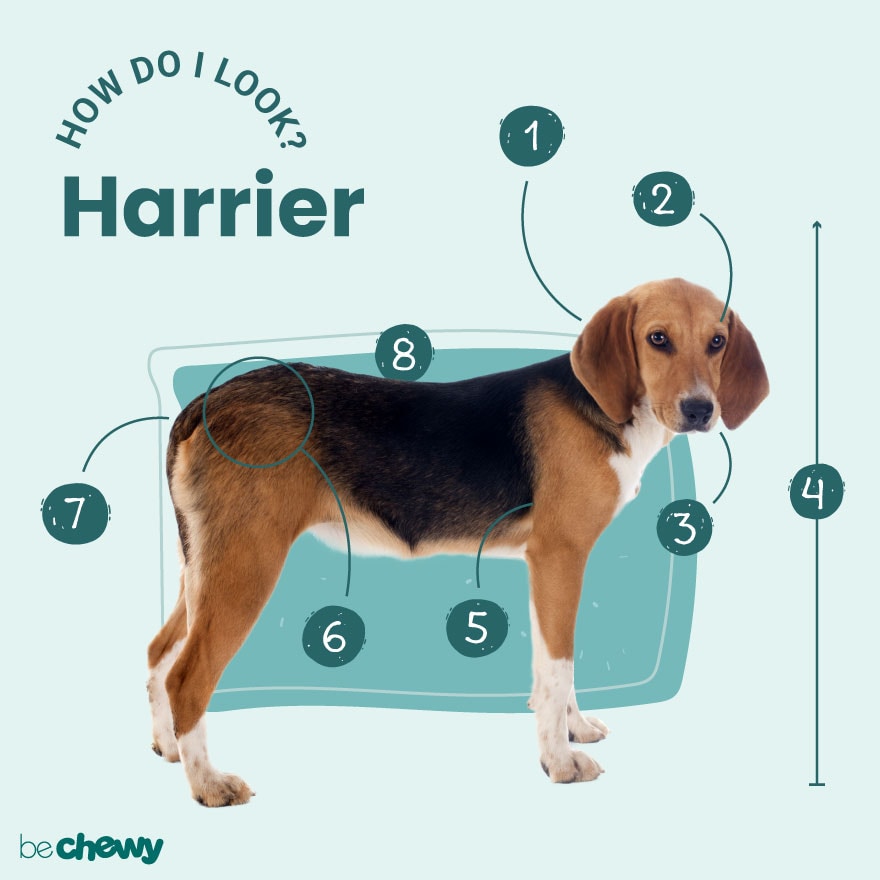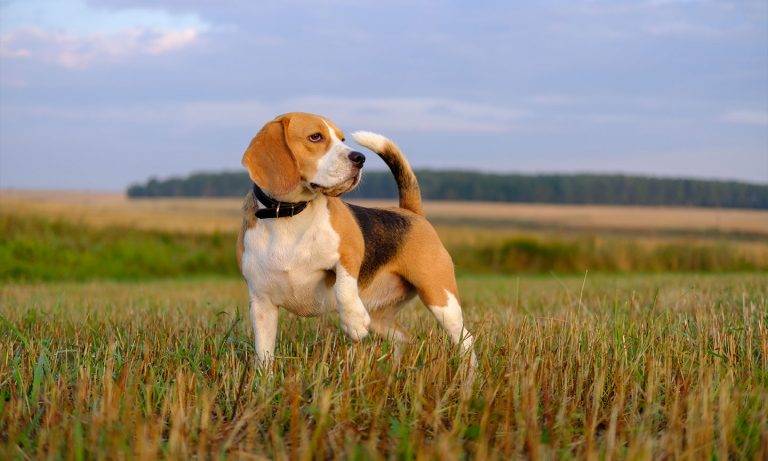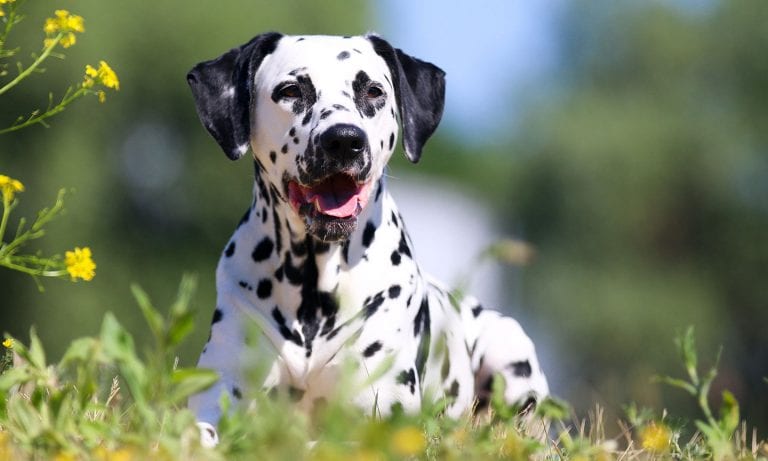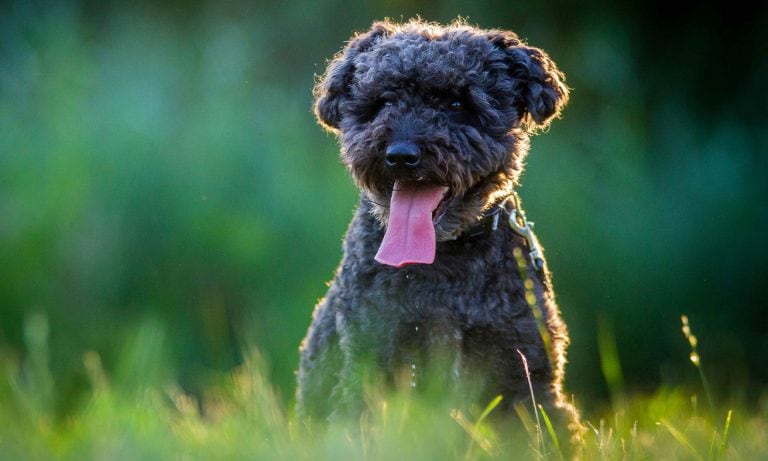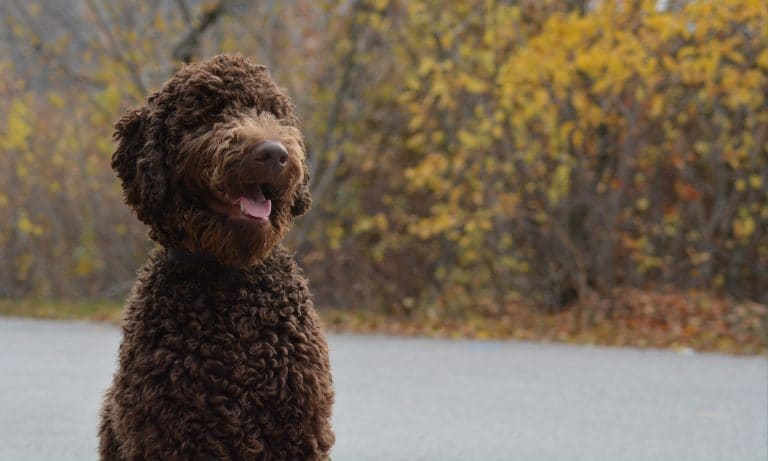Harriers love only one thing more than the outdoors: their people. From hiking to jogging to playing in the backyard, a Harrier pup loves an adventure. And if it’s a group adventure, even better. These dogs were born to work in teams, and they get very lonely all by themselves. But if your energy levels match theirs, you’ll find plenty of ways to keep them engaged and entertained. Harriers live for a challenge, whether it’s tracking down that treat stash you hid in the backyard or winning a local agility trial. Larger than a Beagle and smaller than an American Fox Hound, the Harrier could be just right for you—if you can keep up.
Breed Snapshot
Temperament:
AthleticOutgoingHumorousCoat Color:
Black White And TanLemon And WhiteRed And White
Best For
Harriers, friendly and energetic, need regular exercise and minimal grooming. They thrive in active homes with experienced pet parents who enjoy outdoor activities and can provide consistent training.
Harrier Temperament
Lace up your sneakers because you’ve just met your new running buddy. This dog is ready to mix and mingle like it’s a 26.2-mile race day every day. And make sure you keep up the pace because the Harrier can get a bit stir-crazy and destructive if they don’t exercise enough.
This hunting breed loves family life, and entertaining at home is their favorite. While the Harrier is friendly and totally welcomes a crowd— adults, dogs, older kids—they may be a little stand-offish with strangers. You’ll want to supervise playtimes with very young kids because Harriers may knock small kids over in their rambunctious play, and be sure to teach any little ones around your pet how to respectfully interact with dogs. Start socialization while your pup is young to help them get used to being around new people. Watch out for any creature that could be mistaken for prey, including bunnies, cats and hamsters—the Harrier’s next chase is never too far away.
Harriers aren’t particularly clingy, but they’re pack dogs, which means they’re bred to work as a team and not by themselves. It’s best to be with them most of the day or have another dog at home for them to play with. Give them plenty to keep them occupied, or they might bark, dig, chew things and attempt a jailbreak to alleviate their boredom. Try gifting them chew toys, fetch toys, brain games and maybe even a Jolly Pet ball (they’re great for herding types, but some Harriers love ’em, too).
Since they love to roam (or escape, given half the chance), keep your dog safe by using a leash when not in enclosed spaces and ensuring off-leash areas are really enclosed.
As part of the Hound group, the Harrier was originally bred to hunt hares, so they love a heady mix of physical activity, mental stimulation, tracking and running with a pack. This dog is always up for a workout session at the park to find new friends.
How to Care for a Harrier
Overall, the Harrier’s maintenance is in the medium range—not too little, not too much. Their grooming needs are low, so a little weekly care goes a long way. Plan to spend extra time on exercise and adventures because this breed needs plenty of physical and mental stimulation.
Harrier Health
Harriers have a life expectancy of 12 to 15 years and fewer health issues than other, more common breeds. Nevertheless, it’s good to know potential health problems so you can take the best care of your furry friend and help them live a long and happy life.
- Hip Dysplasia: Hip dysplasia happens when the hip joint is malformed and rubs, causing the dog pain. Treatment options include weight management, physical therapy and, in severe cases, surgery.
- Cataracts: Cataracts, a clouding of the eye that can impair a dog’s vision, are often inherited. Fortunately, surgery is typically an option to correct vision issues caused by cataracts.
- Perianal Fistula: This condition causes painful tracts in the skin around the bum. Allergies and hypothyroidism are two of the potential causes of the disease. While not common in Harriers, treatment options might include a change in diet, antibiotics or medication.
- Epilepsy: Epilepsy can have a hereditary component and seizures usually first occur at 6 months to 5 years of age. Treatment is typically daily medication.
Harrier History
While there are many unconfirmed tales about the history of this breed, there are a few Harrier dog facts we know for sure. Harriers were initially bred for hunting hares—get it, “Harrier”? The first packs appear to have originated in medieval England sometime in the 1200s. Sir Elias de Midhope, a resident of Yorkshire, England, is believed to have developed the first Harrier. His Harrier packs were originally called Penistone Harriers or the Penistone Pack. Detailed records of individual Harrier packs have been recorded in England from 1260 to today.
Harriers have been in America since colonial times. Some say Virginians, perhaps even George Washington, used Harriers to develop American hounds. They appealed to literary types too, and in 1735, English poet William Somervile published a poem called “The Chase” that described a Harrier dog.
The American Kennel Club recognized the Harrier breed in 1885. One of the AKC’s rarest breeds, the Harrier is considered rarer than the panda, with only about 949 Harriers registered with the AKC from 1884 to 1994. The good news is that their rareness may promote healthy genetics, which means the Harrier may have fewer health complications than other breeds.
So, where is the best place to find a Harrier puppy today? You can find a list of reputable Harrier breeders on the American Kennel Club’s website. Depending on the breeder, expect the cost of your Harrier puppy to be anywhere from $1,500 to $2,000. You usually get a Harrier screened for health and temperament issues for that price, and they might even come with pedigree papers. You can also reach out to Harrier rescue organizations to adopt a Harrier.
FAQs
Do Harrier dogs shed?
Yes, Harriers do shed, but only minimally. Regular brushing will ensure your Harrier’s fur is maintained and loose hair captured.
Are Harriers good family dogs?
Harriers are excellent family dogs. They’re bred to work in teams, making them ideal for families that are always on the go, happy to take their dog for regular walks and provide mental stimulation with plenty of games and activities.
Are Harriers aggressive dogs?
No, Harriers aren’t aggressive with people. They’re delightfully friendly with people and other dogs alike.
What is the difference between a Harrier and a Beagle?
The Harrier and the Beagle are two different dogs, even though they look alike. The Harrier is larger, more active and has a longer attention span than the Beagle.
What are the most common Harrier mixes?
- Harrier-Beagle mix
- Harrier-Bluetick Coonhound mix
- Harrier-Bichon Frise mix
- Harrier-Foxhound mix
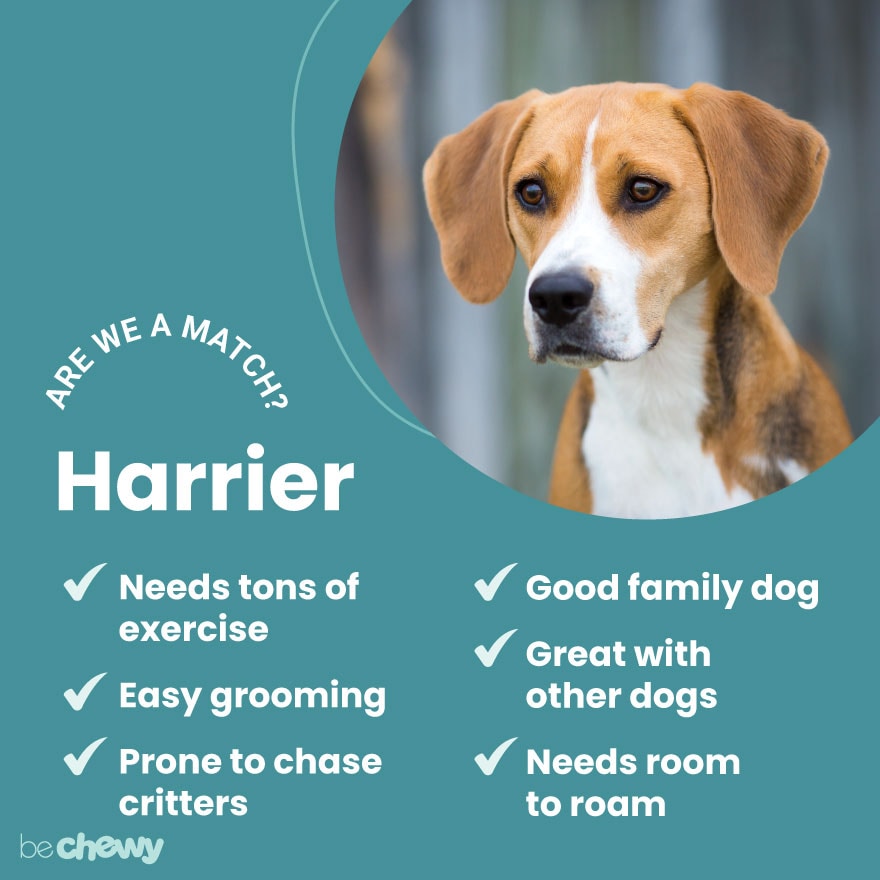
Top Takeaways
Pet parents describe the Harrier as the “hidden gem of the dog world.” The Harrier may be right for you if you love endurance activities and have a bustling household and a fenced-in yard! Once you begin the chase, you’ll never look back.
Donna Smiley, Western Director, Harrier Club of America, and author of “Harrier: a Complete and Reliable Guide,” Krissia Chanto, vet tech and co-owner of Rock Paw Pet Care, and Erick Arceneaux, Harrier pet parent and breeder.
Breed characteristic ratings provided by Dr. Sarah J. Wooten, DVM, CVJ, a veterinarian at Sheep Draw Veterinary Hospital in Greeley, Colorado; dog trainer and behavior consultant Irith Bloom, CPDT-KSA, CBCC-KA, CDBC, owner of The Sophisticated Dog, LLC, in Los Angeles; and certified animal behavior consultant Amy Shojai, CABC, in Sherman, Texas.
The health content was medically reviewed by Chewy vets.

Search for Adoptable Harriers Near You
Female Names
- Luna
- Loose
- Rem
- Jazzy
- Riri
- Sadie
- Marshmellow
- Nala
- Ginger
- Kayda
Male Names
- Rusty Plaster
- Frank
- Jackson
- Maverick
- Colt
- Toby
- Buddy Joe
- Norbert
- Dobby
- Hank
Share:
